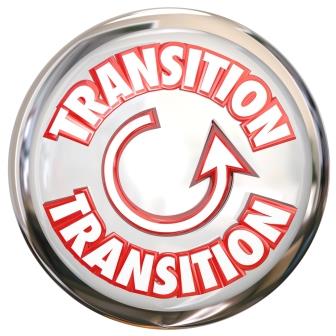In September and October, we hosted a Talks on Tuesdays webinar series entitled, Getting from Here to There: Navigating the Transition from Part C to Part B. This series of two webinars focused on guidance for transition from early intervention (Part C)  to early childhood special education (Part B). Presenters shared information about transition procedures, practical experiences and strategies used by professionals who help families with transition. Because the discussion during the webinar and in chat was so rich, I thought I’d share some of the great ideas from it here on the blog. I can’t take any credit for the info you’ll read below…these tips and strategies came from people like YOU – service coordinators, service providers, and administrators in both Part C and Part B systems. If you have additional strategies or ideas, please share them in the comments below!
to early childhood special education (Part B). Presenters shared information about transition procedures, practical experiences and strategies used by professionals who help families with transition. Because the discussion during the webinar and in chat was so rich, I thought I’d share some of the great ideas from it here on the blog. I can’t take any credit for the info you’ll read below…these tips and strategies came from people like YOU – service coordinators, service providers, and administrators in both Part C and Part B systems. If you have additional strategies or ideas, please share them in the comments below!
What information does your system share with families?
Different types of information were shared, including transition handouts, information sheets, folders, brochures, and packets. These resources included info about the transition process, eligibility requirements, timelines, differences between EI and school services, and other transition options outside of the schools (e.g., private therapy, other preschools, child care). Several systems hold workshops in the winter months or transition info sessions twice each year which are open to all families. One system hosts a meeting like this at the local preschool. Another invites local school personnel to talk about their services and has a parent discuss his/her experience with transition.
What strategies do you use to notify the Part B system of potential referrals?
In addition to building personal relationships with local Part B contacts, a prevailing theme among webinar participants was being mindful about how many referrals they send at one time. Since many referrals are sent to Part B between January and March of each year, many participants said that they tried to spread the number of referrals out “to assist the school system in managing timelines.”
How do you communicate between Part C and Part B to make sure the process goes smoothly?
Many participants described frequent contact by phone, fax, or encrypted email. Other strategies included: inviting the Part B representative to join visits with families, meeting monthly with the school rep to review child-specific transition information, attending local school meetings, and inviting school reps to attend Local Interagency Coordinating Council meetings.
What is one tip or strategy you use to support successful transitions?
Lots of great ideas bubbled up from the chat during the webinars:
- Build good relationships!
- Keep the lines of communication open and communicate often with the family and the school personnel
- Make sure you understand the timelines for transition
- Prepare families by discussing transition at your first visit and then having ongoing discussions so that they know what to expect if and when they transition
- Have a debriefing meeting with your school personnel after the start of the school year to see what went well in the transition process and what could be done better next year
- Individualize the transition process based on the child and family and their specific needs
- Remember that we are all on the same team!
What would you add to this list?
What makes transition successful in your program?
Share your tips, strategies, and success stories in the comments below!
Thanks to everyone who participated in the Talks on Tuesdays webinar series on transition and shared their insights and ideas!
For additional information and resources about transition, visit the EI Topics and Trends page on Transition on the VA Early Intervention Professional Development Center site.


